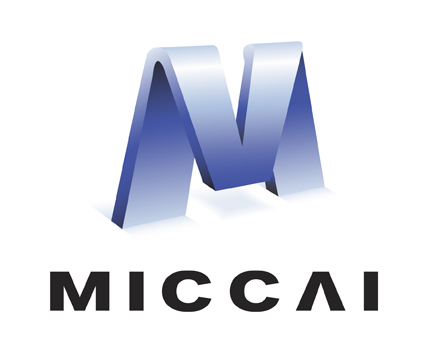Abstract
Melanoma, a highly aggressive form of skin cancer notorious for its rapid metastasis, necessitates early detection to mitigate complex treatment requirements. While considerable research has addressed melanoma diagnosis using convolutional neural networks (CNNs) on individual dermatological images, a deeper exploration of lesion comparison within a patient is warranted for enhanced anomaly detection, which often signifies malignancy. In this study, we present a novel approach founded on an automated, self-supervised framework for comparing skin lesions, working entirely without access to ground truth labels. Our methodology involves encoding lesion images into feature vectors using a state-of-the-art representation learner, and subsequently leveraging an anomaly detection algorithm to identify atypical lesions. Remarkably, our model achieves robust anomaly detection performance on ISIC 2020 without needing annotations, highlighting the efficacy of the representation learner in discerning salient image features. These findings pave the way for future research endeavors aimed at developing better predictive models as well as interpretable tools that enhance dermatologists’ efficacy in scrutinizing skin lesions.
Access this chapter
Tax calculation will be finalised at checkout
Purchases are for personal use only
References
Chen, X., He, K.: Exploring simple Siamese representation learning. In: Proceedings of the IEEE/CVF Conference on Computer Vision and Pattern Recognition (CVPR), pp. 15750–15758 (2021)
Gaudy-Marqueste, C., et al.: Ugly duckling sign as a major factor of efficiency in Melanoma detection. JAMA Dermatol. 153(4), 279–284 (2017). https://doi.org/10.1001/jamadermatol.2016.5500
Grob, J.J., Bonerandi, J.J.: The ‘ugly duckling’ sign: identification of the common characteristics of Nevi in an individual as a basis for melanoma screening. Arch. Dermatol. 134(1), 103–104 (1998)
Grob, J.J., et al.: Diagnosis of Melanoma: importance of comparative analysis and “ugly duckling” sign. J. Clin. Oncol. 30(15_suppl), 8578 (2012). https://doi.org/10.1200/jco.2012.30.15_suppl.8578
Ha, Q., Liu, B., Liu, F.: Identifying melanoma images using efficientNet ensemble: winning solution to the SIIM-ISIC Melanoma classification challenge. arXiv:2010.05351 (2020). https://doi.org/10.48550/ARXIV.2010.05351. https://arxiv.org/abs/2010.05351
He, K., Zhang, X., Ren, S., Sun, J.: Deep residual learning for image recognition (2015). https://doi.org/10.48550/ARXIV.1512.03385. https://arxiv.org/abs/1512.03385
McInnes, L., Healy, J., Saul, N., Großberger, L.: UMAP: uniform manifold approximation and projection. J. Open Source Softw. 3(29), 861 (2018). https://doi.org/10.21105/joss.00861
Rotemberg, V., et al.: A patient-centric dataset of images and metadata for identifying melanomas using clinical context. Sci. Data 8, 34 (2021). https://doi.org/10.1038/s41597-021-00815-z
Ruff, L., et al.: Deep one-class classification. In: Dy, J., Krause, A. (eds.) Proceedings of the 35th International Conference on Machine Learning. Proceedings of Machine Learning Research, vol. 80, pp. 4393–4402. PMLR (2018). https://proceedings.mlr.press/v80/ruff18a.html
Soenksen, L.R., et al.: Using deep learning for dermatologist-level detection of suspicious pigmented skin lesions from wide-field images. Sci. Transl. Med. 13(581), eabb3652 (2021). https://doi.org/10.1126/scitranslmed.abb3652. https://www.science.org/doi/abs/10.1126/scitranslmed.abb3652
Wang, T., Isola, P.: Understanding contrastive representation learning through alignment and uniformity on the hypersphere. In: III, H.D., Singh, A. (eds.) Proceedings of the 37th International Conference on Machine Learning. Proceedings of Machine Learning Research, vol. 119, pp. 9929–9939. PMLR (2020). https://proceedings.mlr.press/v119/wang20k.html
Wazaefi, Y., et al.: Evidence of a limited intra-individual diversity of Nevi: intuitive perception of dominant clusters is a crucial step in the analysis of Nevi by dermatologists. J. Invest. Dermatol. 133(10), 2355–2361 (2013). https://doi.org/10.1038/jid.2013.183. https://www.sciencedirect.com/science/article/pii/S0022202X15359911
Winkler, J.K., et al.: Melanoma recognition by a deep learning convolutional neural network-performance in different Melanoma subtypes and localisations. Eur. J. Cancer 127, 21–29 (2020). https://doi.org/10.1016/j.ejca.2019.11.020. https://www.sciencedirect.com/science/article/pii/S0959804919308640
Yu, Z., et al.: End-to-end ugly duckling sign detection for melanoma identification with transformers. In: de Bruijne, M., et al. (eds.) MICCAI 2021. LNCS, vol. 12907, pp. 176–184. Springer, Cham (2021). https://doi.org/10.1007/978-3-030-87234-2_17
Author information
Authors and Affiliations
Corresponding author
Editor information
Editors and Affiliations
Rights and permissions
Copyright information
© 2024 The Author(s), under exclusive license to Springer Nature Switzerland AG
About this paper
Cite this paper
Collenne, J., Iguernaissi, R., Dubuisson, S., Merad, D. (2024). Enhancing Anomaly Detection in Melanoma Diagnosis Through Self-Supervised Training and Lesion Comparison. In: Cao, X., Xu, X., Rekik, I., Cui, Z., Ouyang, X. (eds) Machine Learning in Medical Imaging. MLMI 2023. Lecture Notes in Computer Science, vol 14349. Springer, Cham. https://doi.org/10.1007/978-3-031-45676-3_16
Download citation
DOI: https://doi.org/10.1007/978-3-031-45676-3_16
Published:
Publisher Name: Springer, Cham
Print ISBN: 978-3-031-45675-6
Online ISBN: 978-3-031-45676-3
eBook Packages: Computer ScienceComputer Science (R0)



